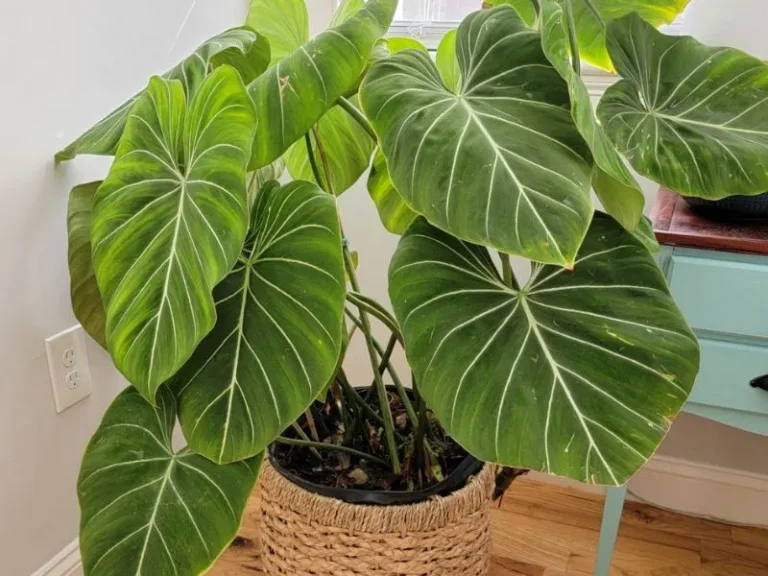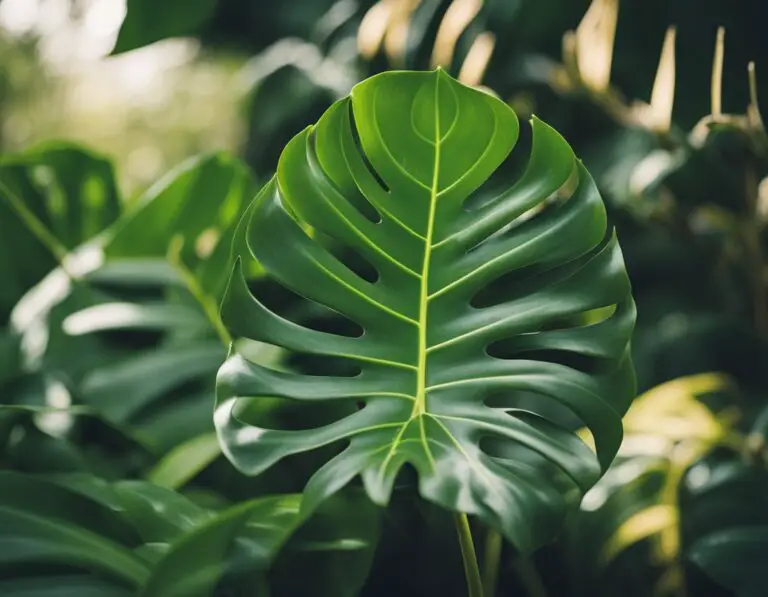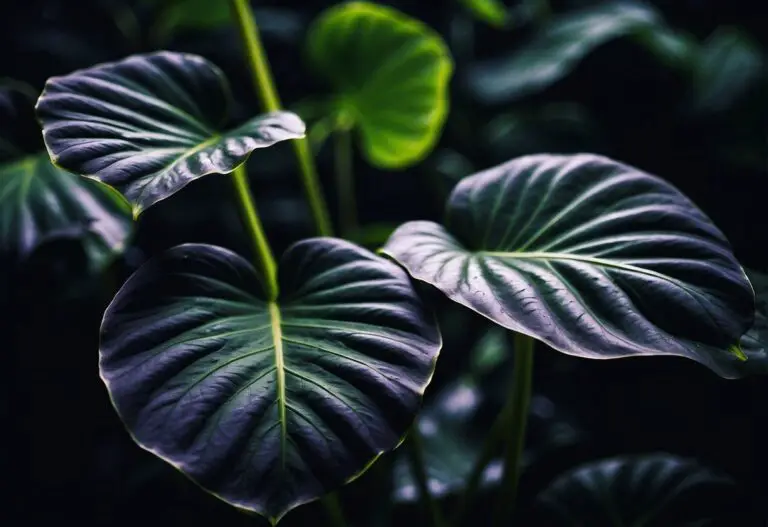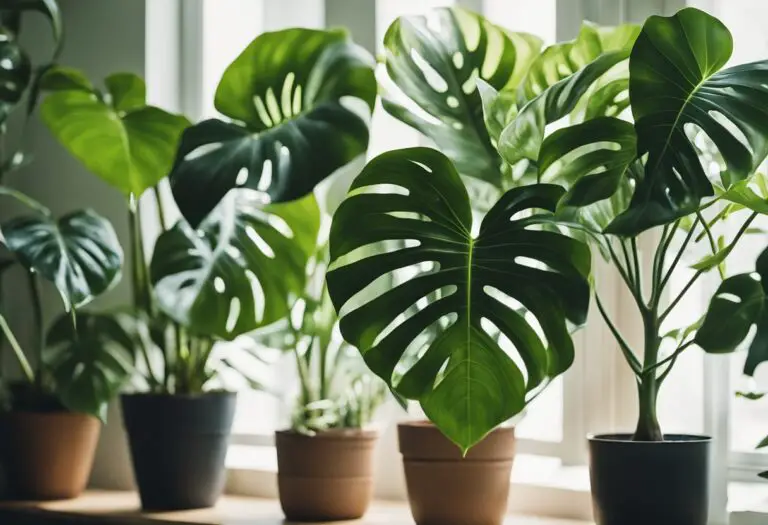Philodendron Werneri: A Friendly Guide to Caring for this Rare Houseplant
If you’re looking for a unique and beautiful houseplant to add to your collection, look no further than the Philodendron Werneri. This rare climbing plant is native to Ecuador and boasts heart-shaped green leaves that are easy to care for and air-purifying.
Whether you’re a seasoned plant parent or just starting out, the Philodendron Werneri is a great choice for adding some greenery to your home or office.

To properly care for your Philodendron Werneri, it’s important to understand its needs. This plant prefers bright, indirect light and well-draining soil.
You’ll also want to make sure to keep the soil moist but not waterlogged. With proper care, your Philodendron Werneri will thrive and add a unique touch to your space.
Key Takeaways
- Philodendron Werneri is a rare and beautiful climbing houseplant native to Ecuador.
- This plant is easy to care for and air-purifying.
- Philodendron Werneri prefers bright, indirect light and well-draining soil to thrive.
Understanding Philodendron Werneri
Philodendron werneri is a beautiful and rare houseplant that belongs to the Araceae family. It is native to Central and South America and is prized for its unique foliage.
Origins and Habitat
Philodendron werneri is native to Ecuador, where it grows as an evergreen climbing plant in the rainforest.
It prefers a warm and humid environment with well-draining soil. In its natural habitat, it can grow up to 6 feet tall, but as a houseplant, it typically stays smaller.
Botanical Characteristics
Philodendron werneri has green leaves with prominent veins and a heart-shaped appearance. The leaves are glossy and have a smooth texture.
The plant produces white flowers if the temperature is cool enough. It is relatively easy to care for and is an excellent choice for beginners.
Here are some key characteristics of Philodendron werneri:
- It is an evergreen climbing plant.
- It has unique foliage with heart-shaped leaves.
- It produces white flowers if the temperature is cool enough.
- It is easy to care for and is an excellent choice for beginners.
In summary, Philodendron werneri is a beautiful and unique houseplant that is easy to care for. It is native to Ecuador and prefers a warm and humid environment with well-draining soil.
Its green leaves with prominent veins and heart-shaped appearance make it a popular choice among houseplant enthusiasts.
Caring for Your Philodendron Werneri

Taking care of your Philodendron Werneri is easy and straightforward. By following a few simple guidelines, you can ensure that your plant grows healthy and strong.
Lighting Requirements
Philodendron Werneri prefers bright, indirect light. Direct sunlight can scorch its leaves, while low light can cause the plant to become leggy and lose its vibrant color.
The plant can tolerate some shade, but it should not be placed in a completely dark area. If you notice your plant’s leaves turning yellow or brown, it may be getting too much direct sunlight.
Watering Schedule
Philodendron Werneri prefers to be kept evenly moist, but not waterlogged. Water your plant thoroughly when the top inch of soil feels dry to the touch.
Be sure to use a pot with drainage holes to prevent water from accumulating at the bottom of the pot. Overwatering can lead to root rot, which can be fatal to your plant.
Soil and Fertilization
Philodendron Werneri prefers well-draining soil that is rich in organic matter. You can use a commercial potting mix or make your own by mixing equal parts peat moss, perlite, and vermiculite.
Fertilize your plant once a month during the growing season with a balanced, water-soluble fertilizer. Be sure to follow the instructions on the fertilizer package to avoid over-fertilizing your plant.
Temperature and Humidity Needs
Philodendron Werneri prefers temperatures between 60 and 75 degrees Fahrenheit. Avoid placing your plant near drafts or heating vents, which can cause temperature fluctuations.
The plant also prefers high humidity levels, so consider using a humidifier or placing a tray of water near your plant to increase humidity. If the air in your home is particularly dry, you may need to mist your plant with water to keep it hydrated.
Remember to keep an eye on your Philodendron Werneri and adjust your care routine as needed. With a little bit of attention, your plant will thrive and bring beauty to your home for years to come.
Propagation Techniques

Philodendron Werneri is a popular plant that can be propagated through stem cuttings and air layering. Both methods are easy to follow and yield great results.
Stem Cuttings
Stem cuttings is the most common method of propagation for Philodendron Werneri. It involves cutting a stem from the plant and placing it in water or moist soil until roots form. To ensure successful propagation, choose a healthy stem with at least one node and two leaves.
Remove the lower leaves and dip the cut end of the stem in rooting hormone before planting it in soil or water. Keep the cutting moist and in indirect light until roots have formed.
Air Layering
Air layering is another method of propagation that can be used for Philodendron Werneri. This method involves creating a small wound on the stem of the plant and wrapping it with moist sphagnum moss.
The moss is then covered with plastic wrap to hold moisture in. After a few weeks, roots will form on the moss and the new plant can be cut from the parent plant and potted. This method is best used for larger plants with thicker stems.
Remember, propagation takes time and patience. Be sure to keep the soil or water moist and in indirect light until roots have formed. With proper care and attention, you can successfully propagate your Philodendron Werneri and enjoy a thriving plant collection.
Common Issues and Solutions
Philodendron werneri is a relatively easy plant to care for, but like any houseplant, it can experience problems. Here are some common issues you may encounter and how to solve them:
Pest Infestations
Pests can be a big problem for philodendron werneri. The most common pests are spider mites, mealybugs, and scale insects. If you notice any of these pests on your plant, you should act quickly to prevent them from spreading.
- Spider mites: These tiny pests can be difficult to see with the naked eye. They usually appear as small, white dots on the leaves. To get rid of spider mites, you can spray the plant with a mixture of water and dish soap. You can also use neem oil or insecticidal soap.
- Mealybugs: These pests look like small, white, cottony masses on the leaves and stems. To get rid of mealybugs, you can use a cotton swab dipped in rubbing alcohol to wipe them off. You can also use neem oil or insecticidal soap.
- Scale insects: These pests look like small, brown bumps on the leaves and stems. To get rid of scale insects, you can use a cotton swab dipped in rubbing alcohol to wipe them off. You can also use neem oil or insecticidal soap.
Diseases and Disorders
Philodendron werneri can also be susceptible to certain diseases and disorders, such as root rot and leaf spot. These issues can be caused by overwatering, poor drainage, or high humidity levels.
- Root rot: This is a fungal disease that can be caused by overwatering or poor drainage. To prevent root rot, make sure your plant is in a well-draining pot and only water it when the top inch of soil is dry. If you suspect your plant has root rot, you should remove it from the soil and trim away any affected roots.
- Leaf spot: This is a fungal disease that can be caused by high humidity levels or overwatering. To prevent leaf spot, make sure your plant is in a well-ventilated area and only water it when the top inch of soil is dry. If you notice any infected leaves, you should remove them and dispose of them in the trash.
Environmental Stress
Philodendron werneri can also experience stress from environmental factors, such as temperature fluctuations and low light levels. Here are some tips to help your plant thrive:
- Temperature: Philodendron werneri prefers temperatures between 65 and 80 degrees Fahrenheit. Avoid exposing your plant to extreme temperatures or drafts.
- Light: Philodendron werneri prefers bright, indirect light. Avoid exposing your plant to direct sunlight, as this can burn the leaves.
By following these tips, you can help your philodendron werneri thrive and avoid common issues.
Design and Styling Tips
When it comes to designing and styling your Philodendron Werneri, there are a few things to consider. From potting to pruning, there are different ways to showcase your plant’s beauty. Here are some tips to help you get started.
Potting and Repotting
Choosing the right pot for your Philodendron Werneri is essential. You want to make sure that the pot is the right size for your plant and that it has good drainage.
A pot that is too small can stunt your plant’s growth, while a pot that is too large can cause overwatering. When repotting, make sure to use a well-draining soil mix that is rich in organic matter.
Pruning and Shaping
Pruning and shaping your Philodendron Werneri can help it grow fuller and healthier. Regularly removing dead or yellowing leaves can prevent disease and encourage new growth.
You can also shape your plant by pinching back new growth to encourage branching. Don’t be afraid to experiment with different pruning techniques to find what works best for your plant.
Display Ideas
There are many creative ways to display your Philodendron Werneri. You can hang it from the ceiling using a macrame hanger, or display it on a shelf using a decorative pot.
You can also train your plant to climb a trellis or moss pole for a more dramatic effect. Whatever display method you choose, make sure to place your plant in a spot with bright, indirect light.
Remember that Philodendron Werneri is a beautiful and versatile plant that can thrive in a variety of settings. With the right potting, pruning, and display techniques, you can create a stunning display that showcases your plant’s natural beauty.
Frequently Asked Questions
How do you care for a Philodendron werneri?
To care for a Philodendron werneri, you should keep it in a well-draining soil mix and water it when the top inch of soil is dry.
This plant prefers bright, indirect light and temperatures between 65-80°F. Fertilize it once a month during the growing season with a balanced fertilizer.
What size does a Philodendron werneri typically reach?
A Philodendron werneri can grow up to 12-18 inches in height and width. Its leaves are oval-shaped and dark green with light-colored veins running through them.
Where can I find a Philodendron werneri for purchase?
Philodendron werneri can be found for purchase at local plant nurseries or online plant stores. You can also check with local plant enthusiasts and plant swap groups to see if they have any available.
What is the price range for a Philodendron werneri?
The price range for a Philodendron werneri can vary depending on the size and availability. Typically, prices range from $20-$50.
How does Philodendron werneri differ from Philodendron nangaritense x werneri?
Philodendron werneri and Philodendron nangaritense x werneri are two different plants. Philodendron werneri has oval-shaped leaves, while Philodendron nangaritense x werneri has elongated leaves.
Additionally, Philodendron nangaritense x werneri is a hybrid plant that is a cross between Philodendron werneri and Philodendron nangaritense.
What are the ideal lighting conditions for a Philodendron werneri?
Philodendron werneri prefers bright, indirect light. Direct sunlight can scorch its leaves, while low light conditions can cause the plant to grow slowly and produce smaller leaves. Place it near a window that receives bright, indirect light for optimal growth.






